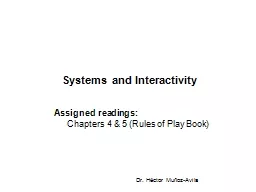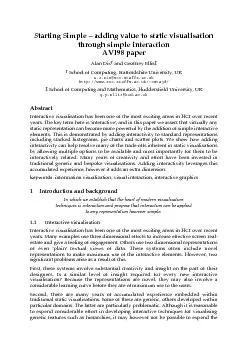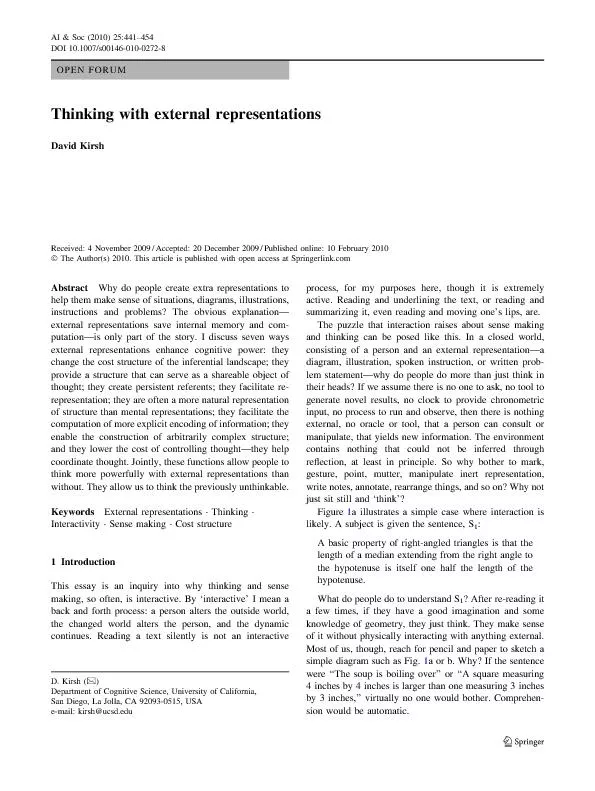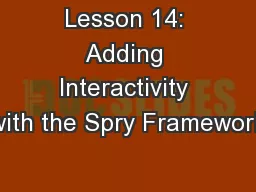PPT-Systems and Interactivity
Author : kittie-lecroy | Published Date : 2018-01-04
Dr H é ctor Mu ñ ozAvila Assigned readings Chapters 4 amp 5 Rules of Play Book Systems Various Definitions A group of interrelated elements forming a complex whole
Presentation Embed Code
Download Presentation
Download Presentation The PPT/PDF document "Systems and Interactivity" is the property of its rightful owner. Permission is granted to download and print the materials on this website for personal, non-commercial use only, and to display it on your personal computer provided you do not modify the materials and that you retain all copyright notices contained in the materials. By downloading content from our website, you accept the terms of this agreement.
Systems and Interactivity: Transcript
Download Rules Of Document
"Systems and Interactivity"The content belongs to its owner. You may download and print it for personal use, without modification, and keep all copyright notices. By downloading, you agree to these terms.
Related Documents












![[BEST]-Build Your Own AJAX Web Applications: Usable and Accessible Interactivity](https://thumbs.docslides.com/987065/best-build-your-own-ajax-web-applications-usable-and-accessible-interactivity.jpg)

